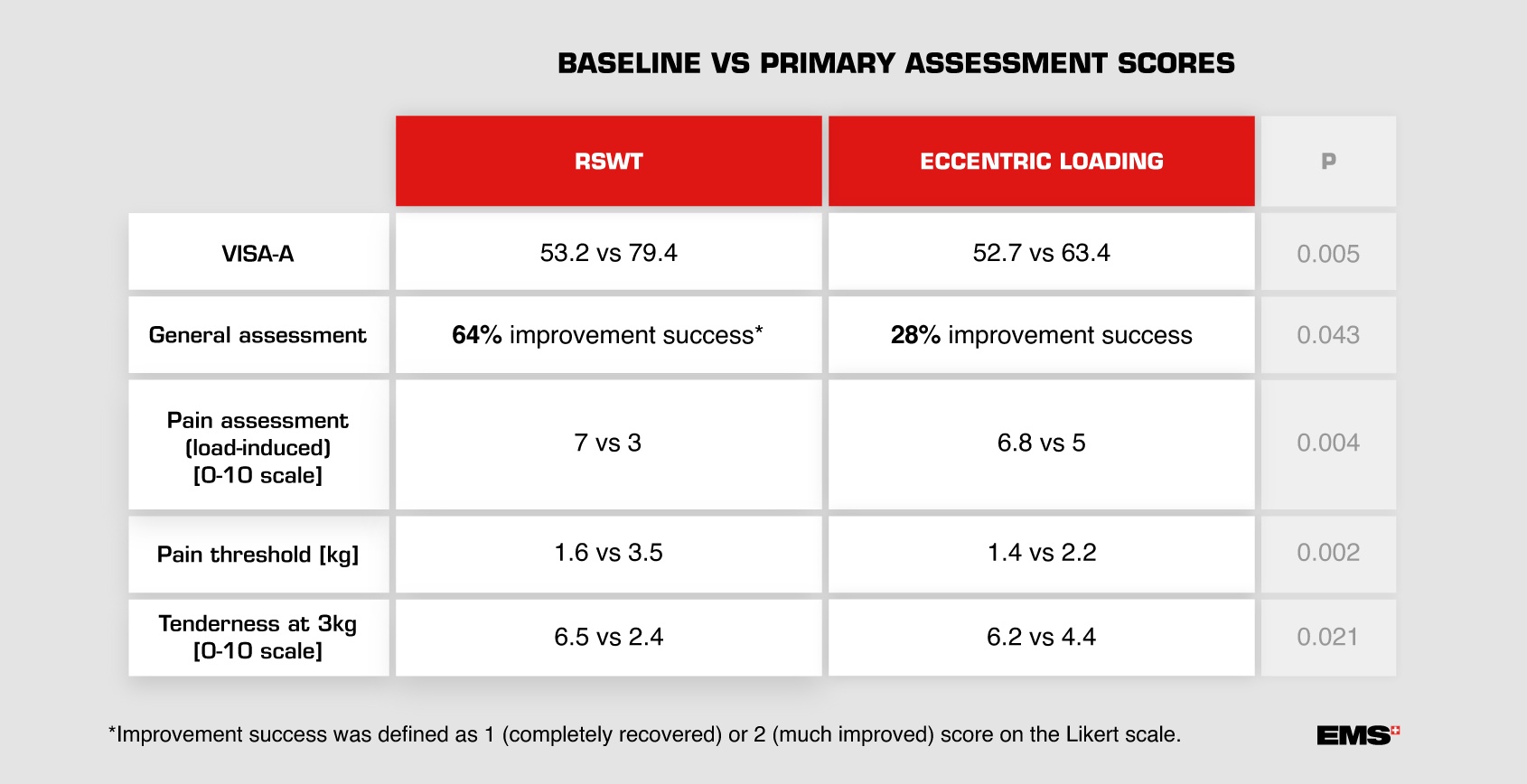
Eccentric loading vs radial shock wave treatment for chronic insertional Achilles tendinopathy
Rompe, Jan D et al. “Eccentric loading compared with shock wave treatment for chronic insertional Achilles tendinopathy. A randomized, controlled trial.” The Journal of Bone and Joint Surgery. American Volume vol. 90,1 (2008): 52-61.
Background
A randomized controlled trial described below focuses on a specific type of Achilles tendinopathy (chronic and insertional) and adds vital evidence to the unresolved issue. It compares the efficacy of eccentric loading and repetitive, low-energy shock wave therapy in a group of patients suffering from the condition.
Patients & methods
50 patients (18-70 years old) were enrolled in the study. All of them were suffering from chronic (≥6 months) insertional Achilles tendinopathy and had been unsuccessfully treated before (local anaesthetics, corticosteroids, NSAIDs, physiotherapy and/or orthotics) for at least 3 months. The diagnosis was additionally confirmed during the enrollment process by the orthopedists participating in the study.
The study took place in the primary-care setting. Patients were randomly allocated to either the eccentric loading group (n=25) or to the low energy, repetitive shock wave therapy group (n=25) and analyzed with the intention-to-treat approach. They were initially followed-up after 4 months from the baseline. At this stage, they were also given an option to cross over. The second analysis took place 15 months from the baseline. The evaluation included pain, function and activity assessment as well as the VISA-A* questionnaire.
*VISA-A - Victorian Institute of Sport Assessment-Achilles
- Eccentric training consisted of 3 sets of specific exercises to be completed twice a day, every day for 12 weeks.
- Radial shock wave therapy (RSWT) was performed during three sessions with the use of EMS Swiss DolorClast® (device settings: 2000 pulses, pressure of 2.5 bars, energy flux density of 0.12 mJ/mm2, eight pulses/s).
The improvement of the VISA-A score during the initial follow-up was the primary efficacy endpoint.
The additional evaluation included:
- general assessment with the use of the Likert scale,
- pain assessment (using load-induced pain and tenderness evaluation a 0-10 scale and pain threshold determination with an algometer),
- reports on the use of analgesics and consultations with healthcare providers.
Results

Initial assessment - 4 months from the baseline
The initial assessment, 4 months from the baseline, showed improvement in both groups in every evaluated aspect. The table below presents detailed outcomes:
Most importantly, in the case of every assessed factor, the improvement was significantly greater among the patients receiving RSWT.
Secondary assessment - 15 months from the baseline
No side effects of either treatment were reported during the course of the study and the improvement results of the RSWT were sustained. More patients decided to cross over in Group 1 (eccentric loading) than in Group 2 (RSWT).
Conclusion
This study confirms the hypothesis that repetitive, low-energy RSWT supports the healing process in chronic insertional Achilles tendinopathy cases. This method stimulates soft-tissue regeneration, enhancing angiogenesis and inhibiting pain receptors at the same time. It is worth acknowledging that RSWT acts more on tissue regeneration than on inhibiting the inflammation process. This fact goes in line with the pathogenesis of Achilles tendinopathy, where tendon overuse and consequent collagen fibres disorder play a more significant role than the inflammation process. Taking into account this fact and the results of the presented study, RSWT seems to be an appropriate treatment for chronic insertional Achilles tendinopathy, superior to eccentric loading in terms of efficacy. Evidence prompts it to be a reliable alternative to surgical treatment.
It is more possible for patients suffering from chronic insertional Achilles tendinopathy to recover when being treated with RSWT than with eccentric loading.
